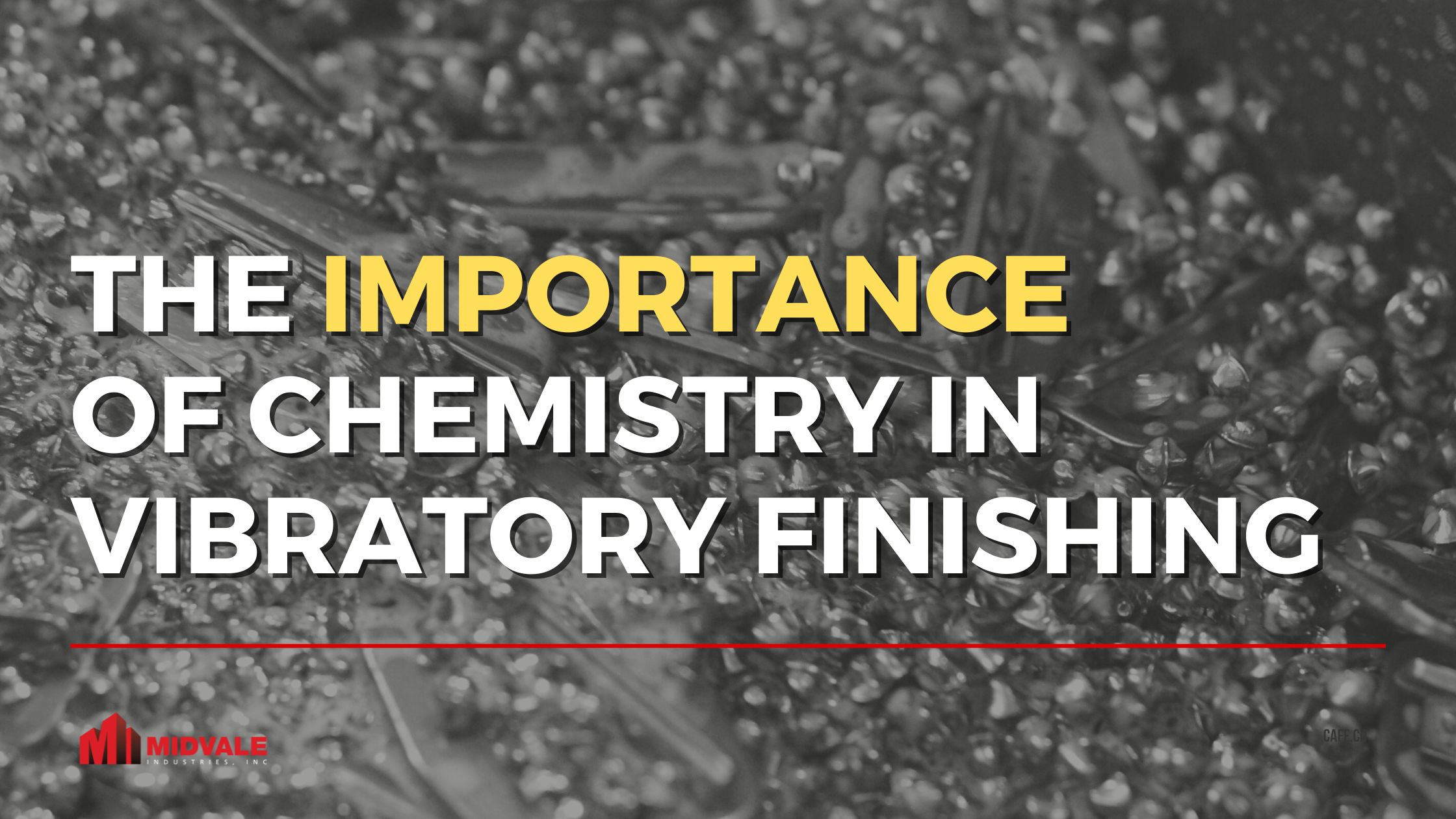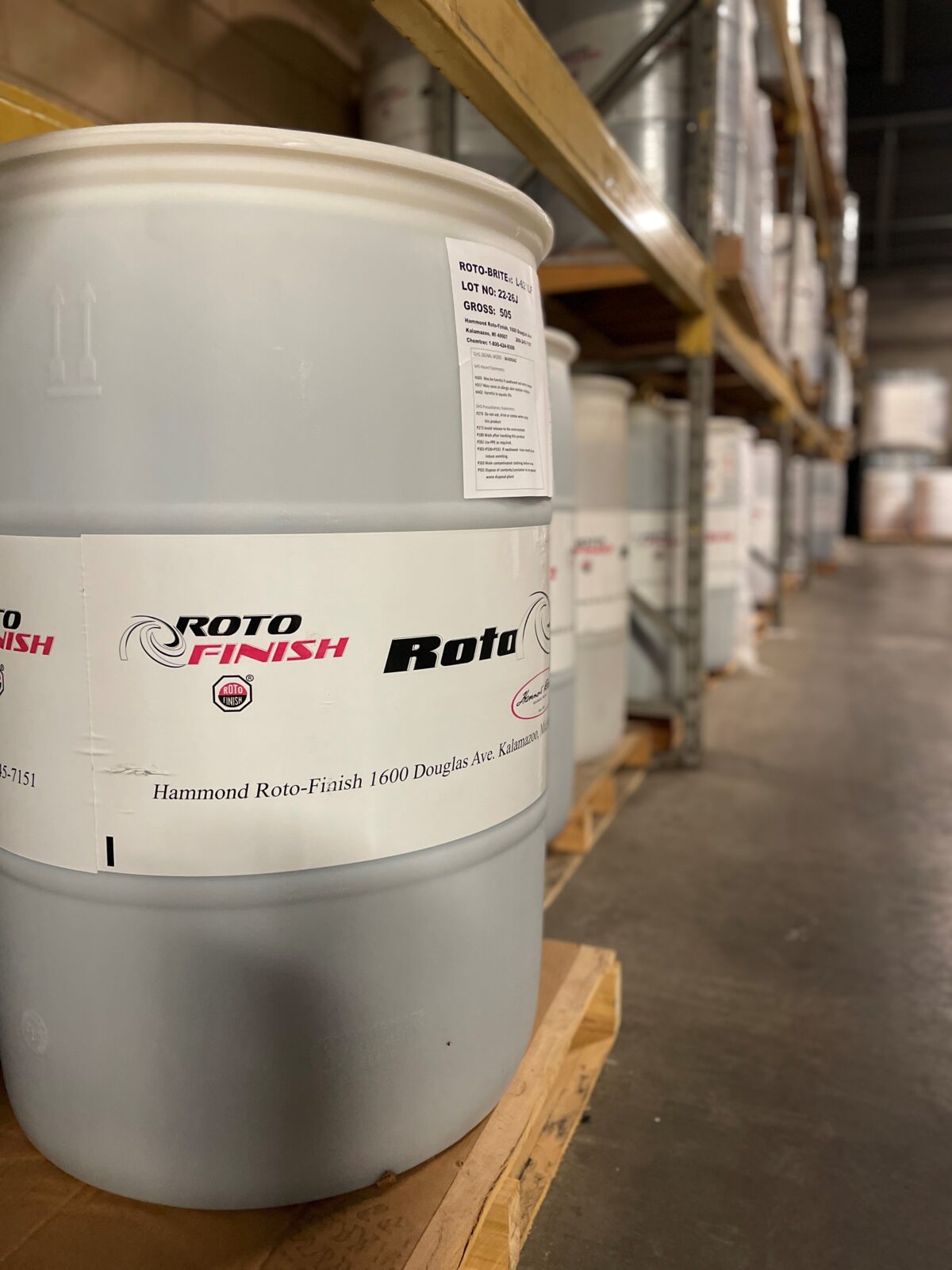
The Importance of Chemistry in Vibratory Finishing
How the Right Chemistry Can Transform Your Vibratory Finishing Process
Vibratory finishing equipment, or mass finishing, provides batch finishing processes for a multitude of parts such as descaling, deburring, polishing, cleaning, surface preparation, and other applications. These systems reduce labor and cut down on the total processing time spent on parts. There is a variety of vibratory equipment, media and chemistry utilized in the process. Each of these play a role in the final outcome of the part which is why it’s important to learn about each to ensure it’s the best fit for your process. This article will break down chemistry and how it affects the vibratory finishing process.
Types of Vibratory Chemistry
Vibratory finishing chemistry is engineered for specific applications to provide the best surface finish. These compounds ensure that your media and equipment continue to run at high production levels to meet your surface specifications. There are multiple types of chemistry for vibratory finishing processes:
- Burnishing Compound – creates a highly polished and bright surface finish. Can also develop additional colors to the part.
- Cleaning Compound – enhances the feed and roll of the mass as well as cleans the parts.
- Deburring Compound – assists in removing burrs and provides smooth and refined surfaces while providing lubrication and reducing impingement.
- Descaling Compound – removes tough oxide and carbonized oxide films.
- Inhibiting Compound – protects parts from oxidation, corrosion, and tarnishing.
Why Vibratory Chemistry Is Important
Chemistry improves the vibratory finishing process through a variety of factors. It’s important to dial in each aspect of your process. Here are a few ways the chemistry will affect the process:
- Cleaning and degreasing – The chemistry acts as a lubricant and surfactant, facilitating the breakdown and suspension of oils, greases, and other contaminants. This prevents them from redepositing on the parts and ensures thorough cleaning.
-
- pH Control – Depending on the type of contaminants and workpiece material, the pH of the solution can be adjusted for optimal cleaning. Alkaline compounds are effective for greasy soils, while acidic solutions might be used for rust removal. Balanced pH also protects against corrosion.
-
- Preventing media wear – the chemistry will keep the media clean and sharp, reducing the ‘glaze’ effect that can happen to tumbling media. The chemistry will also act as a lubricant, reducing friction between media and parts.
- Process Control – Foam build up can hinder the finishing process by reducing the cutting action of the media. The chemistry can be formulated with anti-foaming agents to maintain appropriate foam levels.
- Corrosion – Protecting parts from corrosion by utilizing rust inhibitors in the chemistry formula.
Improper use of chemistry or ratios can result in severe quality issues. If the chemistry is not suited for your process, or you don’t have the ratio correct, there can be inadequate contaminant removal, surface staining, corrosion, or pitting. There will also be a decreased life on your media, longer cycle times, and extra waste generated.
Best Practices for Utilizing Chemistry In Your Vibratory Finishing Process
Chemical Composition – There are many pre-mixed chemistries on the market. However, your process may need an engineered solution. It is recommended to run tests based on the part and the contaminants to create the most optimal solution for your cleaning process.
Concentration – Finding the best ratio for your finishing process in crucial. During testing, you will have an opportunity to develop the ratio of media, chemistry, and water. If your concentration is too low, there will be a drop in effectiveness and increase in cycle time. If the concentration is too high, there may be corrosion and damage done to the surface of the parts.
pH – The acidity or alkalinity of the solution can affect its cleaning power and compatibility with different materials. For example, acidic solutions might be ideal for removing rust but could damage delicate surfaces.
Temperature – Higher temperatures can increase the cleaning effectiveness by accelerating chemical reactions. However, certain materials can be damaged if the temperature is too high. It’s important to understand how the substrate will react with the chemicals.
Foam control – Excessive foaming can hinder the cleaning process by reducing contact between the solution and the surface. Anti-foaming agents are often used to control foam levels.
Rinsing Chemical Residue – Improper rinsing or residue build-up from the cleaning chemistry can affect subsequent finishing steps, like polishing or coating, requiring additional cleaning or rework.
Cycle Time – Controlling the amount of time the chemistry is in contact with the parts will affect the overall results of your finishing process. Some contaminants may require longer exposure times to be removed.
Other considerations for your vibratory finishing process are whether agitation or ultrasonics are needed, the type of surface you are cleaning, the contaminants, water quality, waste removal capabilities, and health hazards.
It is important to regular test and monitor your cleaning bath and waste. Not only will this ensure you are operating an effecting cleaning process, but will help create a safe work environment for your whole team.
The Right Chemistry Can Transform Your Vibratory Finishing Process
In the realm of vibratory finishing processes, the role of chemistry cannot be overstated. As discussed, the right chemistry is pivotal in achieving efficient, high-quality results across various applications, from deburring to polishing and beyond. Understanding the nuances of vibratory finishing chemistry empowers manufacturers to optimize their processes, enhance productivity, and uphold stringent quality standards.

Refine Your Mass Finishing Process
Testing your vibratory finish components is vital for refining your finishing process. Send us your parts and our processing lab will determine the right media and chemistry combination for your finishing application.
